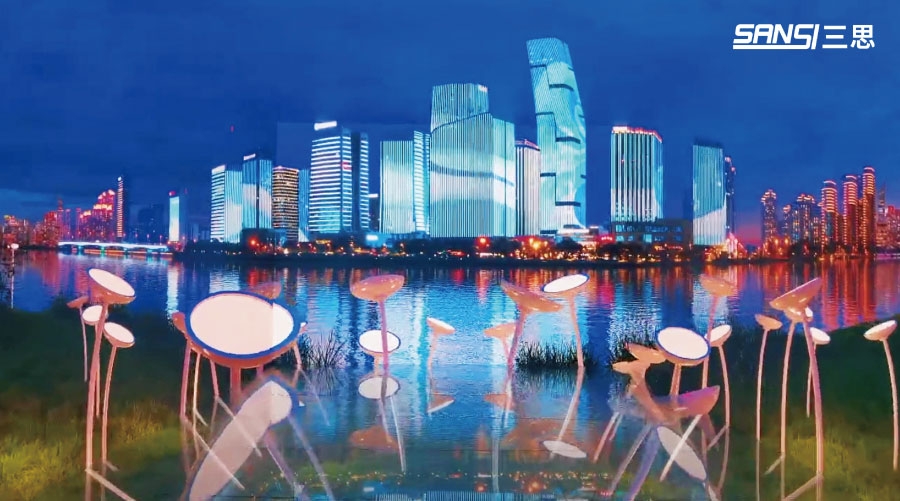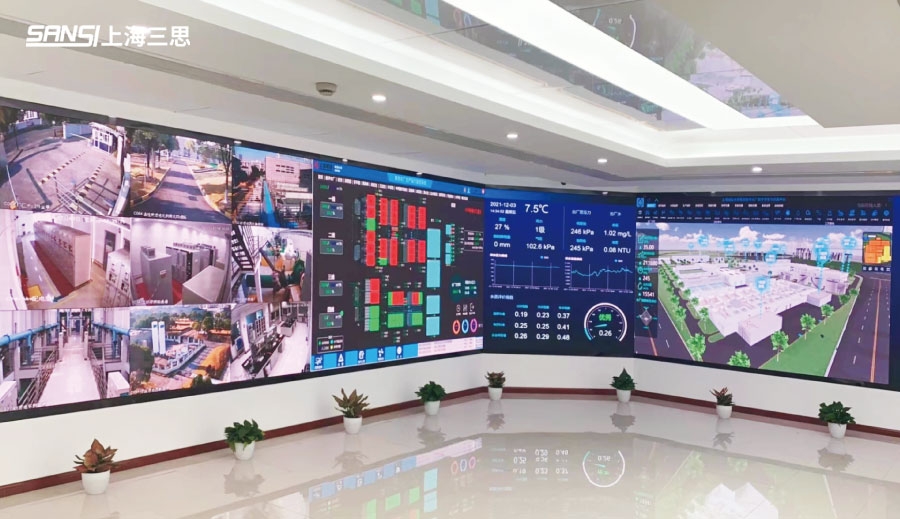Sansi LED: Sustainable LED Lighting and Integrated LED Display
Delivering premium and professional LED Display, LED Lighting, Smart City Integration solutions, trusted by over 60,000 companies worldwide everyday. From industrial lighting to commercial lighting, from outdoor advertising to XR & VR production, Sansi LED greatly improves the quality and sustainability of your business with 30 years of expert experiences.
With the deepening of digital transformation, Shanghai Sansi's digital twin system, based on LED display technology, is driving innovative practices in urban governance, industrial upgrading, and cultural heritage protection, adhering to the concept of "symbiosis between the virtual and the real." This technology provides full-scenario, predictable smart management solutions for megacities by constructing high-precision virtual models and enabling dynamic interaction with physical spaces.

Technological Breakthrough: From Display to Collaboration
Sansi's digital twin system leverages independently developed LED display terminals as carriers, integrating AR (Augmented Reality), multi-channel synchronous fusion, and other technologies to achieve millisecond-level data intercommunication between physical spaces and virtual models. Through simulation-based real-world modeling and dynamic rendering, the system can instantly map key indicators of urban operations, such as traffic flow and equipment operating status, providing decision-makers with a "God's-eye view" of global management capabilities.
Key Projects and Application Scenarios
1. Smart Operation and Maintenance Platform for Large Venues
In the field of sports venues, Sansi has deeply integrated its LED canopy system with the digital twin management platform for Shanghai Stadium, enabling integrated intelligent control of sound, lighting, and electrical equipment. The system can simulate sudden scenarios such as crowd evacuation and equipment failure during events, automatically generate emergency response plans, and connect with the security system, significantly enhancing venue safety and operational efficiency.
2. Visual Control of Urban Water Services
For municipal facilities such as the Nan Shi Water Plant in Shanghai, digital twin technology utilizes LED large screens to display real-time data on water quality monitoring and pipeline pressure. It also simulates risk scenarios such as water pollution and equipment anomalies. Managers can initiate emergency drills in the virtual space, optimize response processes, and ensure the stability and low-carbon operation of the urban water supply system.

3. Predictive Management of Industrial Safety
In industries such as chemicals and energy, the system uses high-precision modeling to restore the internal structure of equipment, combined with sensor data to predict equipment aging trends and trigger maintenance instructions ahead of time. For instance, when pipeline pressure is abnormal, the virtual model automatically marks risk points and pushes three-dimensional maintenance guides, significantly reducing blind spots in manual inspections.
4. Digital Revitalization of Cultural Heritage
In the protection of historic buildings, Sansi combines digital twin technology with LED irregular screens to dynamically restore the original appearance of buildings before damage. Visitors can unlock digital images and literature from different historical periods by scanning the physical buildings with AR on their mobile devices, realizing a "touchable cultural memory."
Future Planning: Comprehensive Collaboration and Ecological Expansion
Sansi's digital twin system plans to further expand its cross-domain collaboration capabilities, for instance, by connecting with urban sensing terminals such as traffic guidance screens and environmental monitoring equipment to build a "prediction-decision-response" closed loop. On the technical front, it is developing AI-based self-optimization functions for twin models, supporting no-code scenario editing and multi-user collaborative operations, thereby lowering the application threshold for government departments and enterprises.
This technological upgrade marks the transition of the LED display industry from "information transfer" to "virtual-real interaction." Through digital twin technology, urban managers can preview the future in virtual spaces, providing an innovative paradigm for smart city construction worldwide.
-
NO DATA
